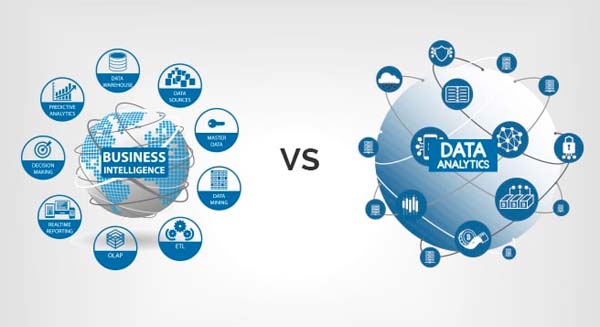If you’re in the world of data and analytics, you might have heard of business intelligence (BI) vs big data. These terms are often used interchangeably, but they are not the same thing.
While they share some similarities, there are key differences between the two that are important to understand. In this article, we will explore the differences and similarities between BI and big data, and how they can be used in business.
Business intelligence vs big data are two terms that are often used in the same context. They both involve the use of data and analytics to make better business decisions. However, they are not the same thing.
Business intelligence is a more established concept, while big data is a relatively new field. Both are important in their own way, and businesses can benefit from using both.
In this article, we will explore the differences and similarities between business intelligence and big data, and how businesses can use them.

What is Business Intelligence?
Business intelligence refers to the use of data and analytics to gain insights into business operations and make better decisions. It involves collecting data from various sources, analyzing it, and presenting it in a way that is easy to understand. The goal of BI is to provide businesses with actionable insights that they can use to improve their operations and make better decisions.
BI Tools and Technologies
There are various BI tools and technologies available on the market. These include:
- Data warehouses
- Dashboards
- Reporting tools
- Data mining software
- Predictive analytics tools
- Online analytical processing (OLAP) tools
How Businesses Use BI
Businesses can use BI to gain insights into various aspects of their operations, such as:
- Sales and marketing
- Customer behavior
- Financial performance
- Supply chain management
- Human resources
BI can help businesses identify trends and patterns in their data, which can be used to make better decisions. For example, a retailer can use BI to analyze sales data and identify which products are selling well, which ones are not, and why. This information can be used to optimize inventory levels, adjust pricing, and improve marketing campaigns.
What is Big Data?
Big data refers to large, complex data sets that cannot be easily analyzed using traditional methods. Big data is characterized by the three V’s: volume, velocity, and variety.
Characteristics of Big Data
- Volume: Big data sets are typically very large, with sizes ranging from terabytes to petabytes.
- Velocity: Big data is generated at a high velocity, often in real-time or near-real-time.
- Variety: Big data comes in many different forms, including structured, unstructured, and semi-structured data.
Types of Big Data
There are three main types of big data:
- Structured data: Data that is organized in a specific way, such as data in a database or spreadsheet.
- Unstructured data: Data that does not have a specific structure, such as text documents, images, and videos.
- Semi-structured data: Data that has some structure, but not to the extent of structured data, such as social media posts or sensor data.
Big data is often used in conjunction with advanced analytics techniques such as machine learning and artificial intelligence to extract insights from the data.
Differences between Business Intelligence and Big Data
While both BI and big data involve the use of data and analytics, there are several key differences between the two.
Data Size and Complexity
One of the main differences between BI and big data is the size and complexity of the data sets involved. BI typically deals with smaller, more structured data sets, while big data involves much larger and more complex data sets. This is because big data includes unstructured and semi-structured data, which can be more difficult to analyze.
Data Structure and Sources
BI relies on structured data sources such as databases, while big data can include a wider variety of structured, unstructured, and semi-structured data sources such as social media, sensor data, and log files.
Data Analysis Methods
The methods used to analyze BI and big data also differ. BI typically uses traditional reporting and analysis techniques such as dashboards and OLAP, while big data requires more advanced analytics techniques such as machine learning and natural language processing.
Similarities between Business Intelligence and Big Data
Despite the differences between BI and big data, there are also some similarities.
Common Goals
Both BI and big data have the same overarching goal: to help businesses make better decisions. They do this by providing insights into business operations that can be used to optimize processes, improve performance, and increase profitability.
Data-Driven Decision Making
Both BI and big data rely on data to make decisions. They both use data to gain insights into business operations, and these insights are used to make data-driven decisions.
How Businesses Can Use Business Intelligence and Big Data
Businesses can use BI and big data in a variety of ways to gain insights into their operations and make better decisions. Some examples include:
- Identifying trends and patterns in customer behavior to optimize marketing campaigns and increase sales.
- Analyzing financial data to identify areas of inefficiency and reduce costs.
- Monitoring supply chain performance to identify areas for improvement and reduce waste.
- Analyzing employee data to identify areas for improvement in HR policies and practices.
Conclusion
In conclusion, while business intelligence vs big data are often used interchangeably, they are not the same thing.
BI involves the use of data and analytics to gain insights into business operations and make better decisions, while big data involves the analysis of large and complex data sets.
Both are important in their own way, and businesses can benefit from using both to gain insights into their operations and make better decisions.
Read More: